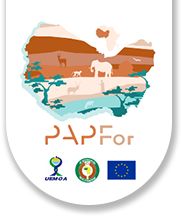Home / Landscapes / Wologizi - Wonegizi - Ziama / Wologizi - Wonegizi - Ziama Protected Areas / The Ziama Biosphere Reserve
The Ziama Biosphere Reserve
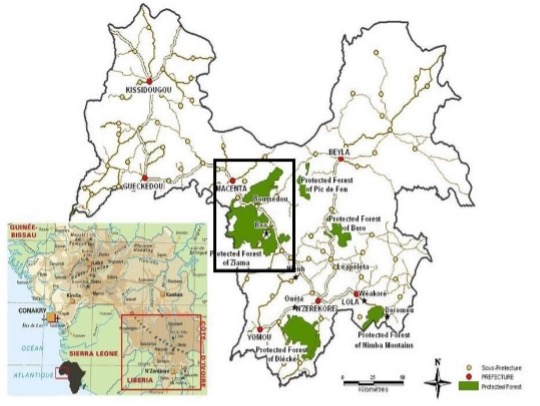
The Ziama Forest is located in Guinea, more precisely in the Forest Guinea (Guinée Forestière) region in the south-east of the country. The region is characterised by its lush vegetation, dense forests and ecological diversity.
The Ziama Biosphere Reserve is located in the prefecture of Macenta. It covers an area of 119 019 hectares, with a highpoint of 1 387 metres.
The reserve is home to one of the last primary forests in West Africa and is recognised for its exceptional biodiversity. It was classified on 12 September 1942 and declared a biosphere reserve in 1981. It is home to numerous plant and animal species.
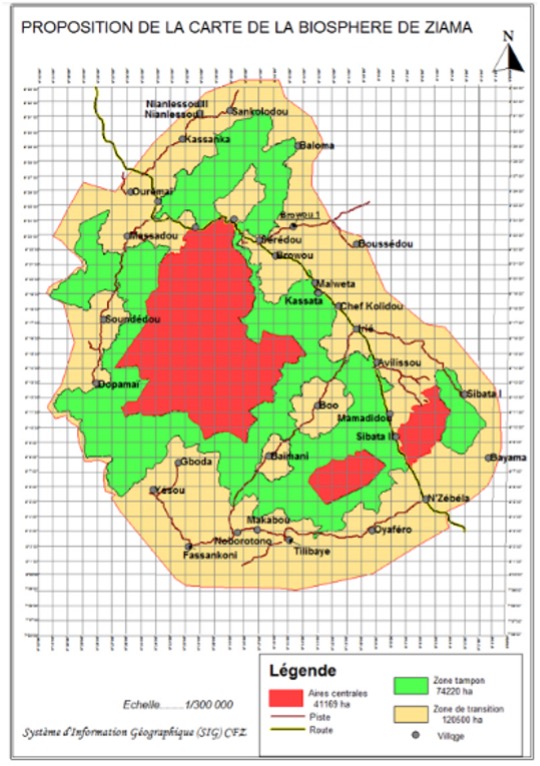
The reserve is surrounded by 31 villages, with a current population estimated at 110 779, an increase of 4.2 % on the population in 2018. Thi population is characterised by its ethnic diversity, rural lifestyle and traditional religious and social practices, as well as by challenges relating to access to basic services and socio-economic development.
Biodiversity of the Ziama forest
Vegetation
The Ziama forest is characterised by vegetation comprising numerous species of trees, herbaceous plants, lianas and ferns. There are endemic species as well as trees of great economic value such as precious wood. According to studies carried out, two plant species have been identified as endemic by the IUCN. These are Mikaniopsis camarae and Invesodicraea pepehabai. Ziama also has 33 endangered plant species: Tarenna hutchinsonii (Critically Endangered (CR), according to the IUCN Red List categories), Thieghemella heckelii (Endangered (EN)) Entandrophragma utile (Vulnerable (VU)), Neolimoniera clidantrifolia (VU), Terminalia ivorensis (VU), Heritiera utilis (VU), Khaya anthotheca (VU), Guarea cedrata (VU), Omphalocapum ahia (EN), Lophira alata (VU), Garcinia Kola (EN), Enthandophragma cylindricum (VU), Anospyxise klaineanna (VU), and Lovoa trichioides (VU).
Fauna
The forest is home to a great diversity of animals, including numerous mammals such as primates (chimpanzees, colobus monkeys, etc.), antelopes, bushpigs, forest elephants, pangolins, civets and various small mammals. It is also home to a wide variety of birds, reptiles and amphibians.
Forest elephant – Loxodonta cyclotis (CR)
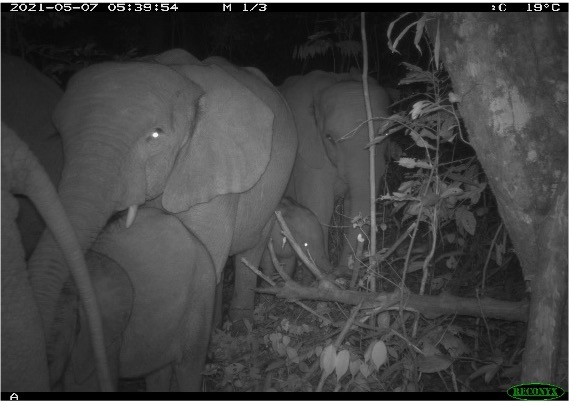
This is a key conservation species. The elephant population in Ziama is one of the last in Guinea and is currently in an evolutionary phase after a period of heavy poaching between 2008 and 2016. Enforcement patrols have reportedly played an important role in stopping poaching, but other activities are contributing to the conservation of the species, such as ecological monitoring using patrols, camera trap surveys and satellite collars; the development of beekeeping to manage elephant incursions into farmers’ fields, and awareness-raising sessions. The group of elephants in the image was pictured by camera traps installed in collaboration with staff from the N’Zérékoré Forestry Centre and local communities.
West African Chimpanzee – Pan troglodytes verus (CR)
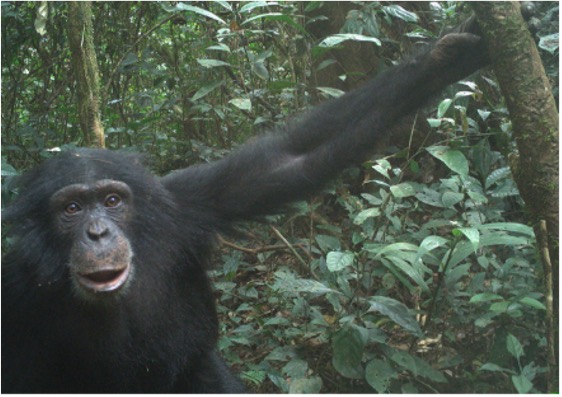
West African chimpanzees are an emblematic species and are integral to Ziama’s ecosystems. As great apes, they play a crucial role in maintaining the forest’s biodiversity, as predators, seed distributors and architects of the forest environment. Chimpanzee presence and population trends in Ziama serve as indicators of the overall health of the ecosystem. Camera traps recently deployed have enabled staff to begin to get to know a few groups of individuals.
Pangolins
Pangolins are one of the most threatened species in Ziama, due to the ease with which they can be hunted and the illegal trade in their meat and scales. Two species have been identified as a result of research activities: the white-bellied (or tree) pangolin (Phataginus tricuspis) and the long-tailed (or black-bellied) pangolin (Phataginus tetradactyla). A study is currently underway to confirm the presence of the giant pangolin in Ziama. Pangolins play an essential role in Ziama’s ecosystems by regulating insect populations, particularly ants and termites.
Birds
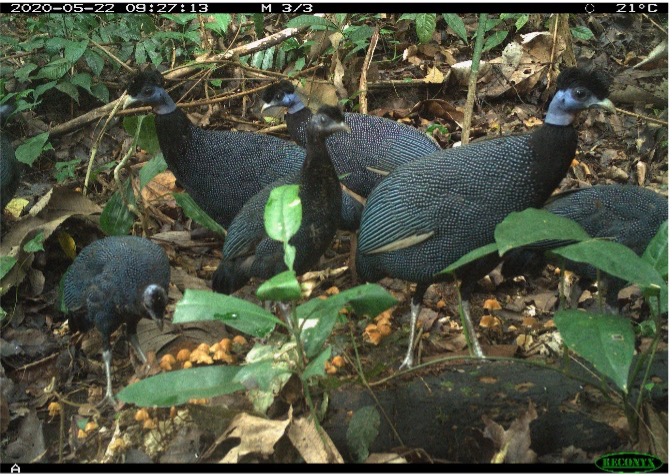
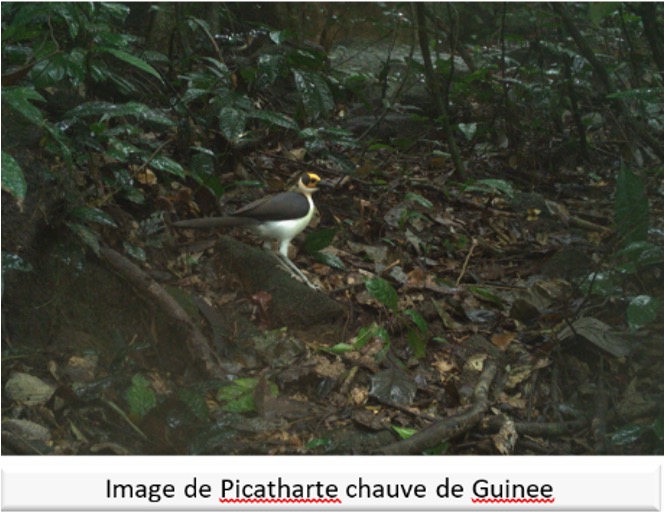
The birdlife at Ziama is remarkably diverse due to the richness of its forest habitat. The reserve is home to many bird species adapted to life in the forest, including passerines, woodpeckers, touracos, barbets, parrots and other species specialising in woodland habitats. Following a rapid survey in 2019, a total of 131 species (37 families) were confirmed. Threatened species recorded during these surveys include the white-breasted guinea fowl (Agelastes meleagrides (VU)), yellow-casqued wattled hornbill (Ceratogymna elata (VU)), yellow-bearded greenbul (Criniger olivaceus (VU)). These three species were observed in both Wologizi and Ziama, while Phyllanthus atripennis (NT) was only seen in the Ziama forest.
Threats to biodiversity in Ziama
Ziama faces a number of threats to its fragile ecosystem and exceptional biodiversity. These include poaching and agricultural encroachment, the latter combined with the use of pesticides and worsening human-wildlife conflicts.
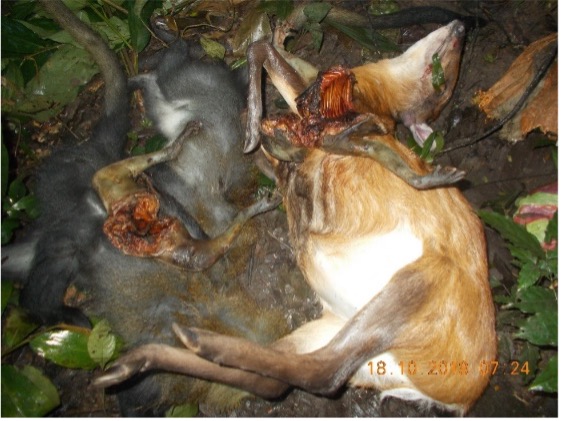
Hunting and poaching : hunting and poaching represent a major threat to many animal species in the Ziama Forest, including large mammals such as chimpanzees, pangolins and primates. The growing demand for bushmeat, wildlife trophies and other animal products is threatening the survival of many vulnerable species in Ziama.
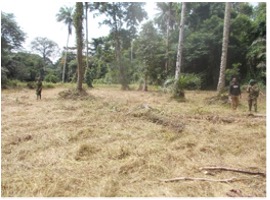
Deforestation : Deforestation in Ziama is mainly caused by the expansion of agriculture, bush fires and other human activities. Land conversion through the exploitation of low-lying areas for farming leads to the loss of vital habitats for many plant and animal species. The use of chemicals in the lowlands also pollutes watercourses and represents a potential threat to aquatic fauna, especially amphibians.
Demographic pressure and expansion: Population growth and urban expansion around Ziama are putting increasing pressure on the forest. The increase in the human population means greater demand for land, natural resources and the ecosystem services provided by the forest, leading to an intensification of destructive activities.
Community governance
The conservation and management of the Ziama Biosphere Reserve is a matter of concern, as it will contribute to climate change resilience and the water and food security of neighbouring communities. This cannot be achieved without the effective involvement of the communities living around the reserve. To this end, community management committees have been set up around Ziama. There are three levels to this structure:
- The local level, which covers the 31 villages;
- The communal level, which will make up the 5 communes of Ziama; and
- The central level, which will serve as the coordinating committee for the Ziama landscape.
These structures were set up on the basis of an elective approach with a total participation of 3 732 people, including 1 686 women. On average, 36 % of the members of these committees are women.
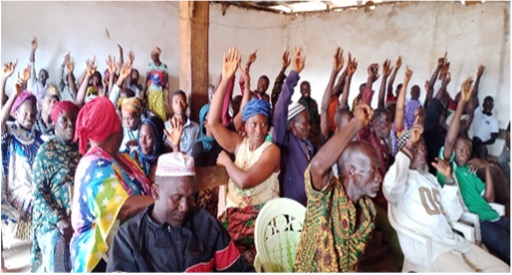
The committees will play a crucial role in the co-management of Ziama by being involved in the implementation of activities aimed at promoting equity and benefit-sharing, increasing and guaranteeing the full participation of indigenous and local communities, respecting their rights and recognising their responsibilities in the management of the Ziama reserve.
Supporting sustainable livelihood activities

The programme strives to develop livelihood activities to help communities improve their well-being. This bee-keeping activity (pictured) has been set up to manage conflicts between wild animals and humans in order to reduce the damage caused to crops by elephants. This activity also helps to increase household income.
Outlook
PAPFor supports the Ziama Reserve through the Wologizi-Wonegizi-Ziama landscape programme implemented by FFI and GRET. The PAPFor programme will come to an end in 2024, but funding from the Agence Française de Developpement through the ‘Project to conserve biodiversity and improve climate resilience in the Ziama Biosphere Reserve’ ("Projet de conservation de la biodiversité et d’amélioration de la résilience climatique de la Réserve de Biosphère de Ziama") will enable the actions undertaken by the European Union project to continue. This will make it possible to continue biodiversity conservation actions and resilient agricultural development, to the benefit of the populations and ecosystems for the conservation of the Wologizi-Wonegizi-Ziama cross-border forest landscape. From 2026, the new European Union programme, NaturAfrica, will complement these actions in this landscape.
